Adding foodservice requires FMs to switch up their strategies.

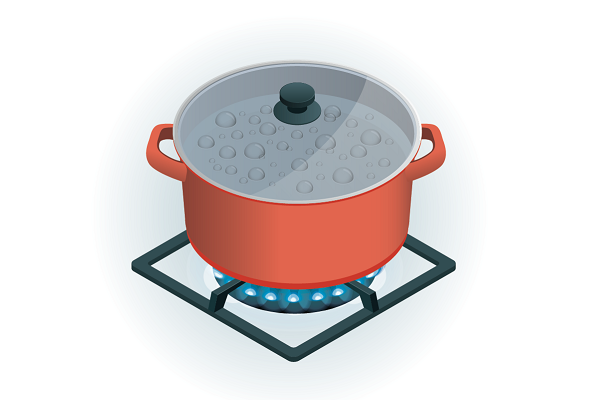
Adding foodservice requires FMs to switch up their strategies.

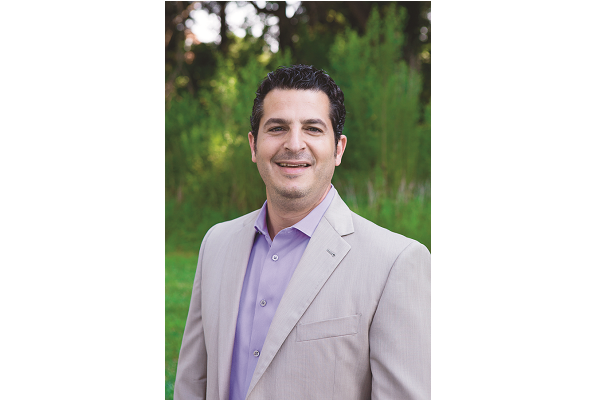
Co-Founder, 23rd Group LLC
“The FM industry is not for everyone. It’s a tough and challenging field, fraught with stress, but so amazingly rewarding.”
On Cofounding the 23rd Group
“I was inspired to build a superior facility management company, whose commitment and ethos is firmly rooted in solving industry challenges, confronting industry norms and implementing bold solutions to advance customer objectives.”
Words of Wisdom
“Listen to your customers about their challenges, pain points and what keeps them up at night. Then, deliver for them.”
Advice for someone starting out?
“Be committed to industry education and personal improvement measures, join industry committees, develop a keen sense of vision to sidestep challenges and capitalize on opportunities. Most importantly, never, ever get comfortable.”
Motivator-in-Chief
“My day starts with saying ‘Good morning’ to each employee and ensuring they are engaged in the process and passionate about delivering superior customer service. I also review and analyze performance and financial reporting metrics to identify trends and isolate potential issues and strategies that can be implemented both internally and externally.”

RFMP, Senior Manager, Facilities Maintenance, The Fresh Market
16 years Facilities Experience
“I plan to stay in the FM field for the foreseeable future. I enjoy developing people and processes to support our operations partners. Every day is fun and exciting as the team solves issues and continues to increase their knowledge.”
Thoughts on the restaurant retail trend?
“Today’s guests want more experiences and to be able to do more tasks in one place. Our mission at The Fresh Market is to inspire our guests to make everyday eating extraordinary.”
Benefits of being a Connex member?
“Connex is a great resource for learning information about the facilities industry and about specific discipline areas. The best tool is the Connex Community. You type in a question, and experts from around the Connex world respond with information and advice to help.”
Advice for someone starting out?
“Learn as much as you can as quickly as you can. Take advantage of peers and suppliers to increase your knowledge base. If you do not know what you are looking at or how to make a repair decision, it can be very stressful. Lean on others to help you as you learn and grow.”
A Typical Day
“I base my priorities on our work order system based upon what is critical for our operations partners. Helping [them] solve their maintenance needs so that our guests receive the best shopping experience possible is our goal every day.”

Annual report launches this fall.
Coming this September: Connex’s industry-leading report on the latest trends driving the facilities management industry. These include regulatory and M&A trends; labor shortages, diversity and women in FM; retail-tainment; financial and technology trends; microgrids; and new store concepts.
These trends are driving change across the industry and will require facilities executives to adapt new strategies and tactics to succeed. Look for the print and digital versions this fall.
Keep an Eye Out
Visit connexus.connexfm.com for more information.

New online education helps FM professionals succeed.
Are you new to Facilities Management (FM)? Are you assuming a new FM role? Are you looking for traditional FM roles explained in easy to understand terms?
Competencies of Facilities Management in Multi-Site & Retail is an intermediate online education series that features eight comprehensive courses of general skills needed by facilities management professionals. The series, developed by Michel Theriault, Principal, Strategic Advisor, FM Insight Consulting Ltd., provides updated information previously found in the “RFMP Study Courses.”
“The Competencies of FM is a resource for seasoned FM professionals. It describes major processes step-by-step and allows you to understand how your industry knowledge can be applied to everyday FM situations,” said Mike McAfee, RFMP, Nothing Bundt Cakes, Manager of Facilities.
Managing Routine and Emergency Repair/Replacement Processes
This course discusses the routine and emergency repair/replacement request process. It includes collecting information, analyzing and making decisions, and then acting to resolve the request.
Preventive Maintenance
Managing scheduled, routine maintenance activities on equipment is explained. It involves establishing the maintenance activities, managing through completion, dealing with follow-up requests and ensuring work is completed properly.
Managing a Project Roll-Out
This course describes Project Roll-Outs and the project management techniques you can use to make your Roll-Outs more successful. It includes information about traditional project phases such as initiating the project, defining the project, developing a project plan, executing the Project Roll-Out and, finally, closing out the project.
New Store Turnover
How to open a new store that has been assigned to you for operation and maintenance is highlighted in this course. It includes information on lease responsibilities, interfaces and communications, and procuring services for the store.
Closing an Existing Store
This course explains how to close an existing store, whether in a leased location or a corporate-owned building.
Maintaining Accurate Database Information
Maintaining and using service, or other related data, is discussed in this course. It describes how to capture and use the data; keep data up-to-date; create reports; analyze and use it for making repair, maintenance and replacement decisions; as well as assessing performance.
Managing Assets
This course discusses how to manage building assets. It includes information about assessing condition, code requirements, health and safety, operational impacts and making repair-and-replace decisions, as well as assessing preventative maintenance needs.
Executing a Disaster Management Plan
This course will help with development and implementation of a Disaster Management Plan for your stores. It involves developing a plan, responding to disasters and suggested follow-up actions.
Sign Up Now
Pricing:
Individual Course
$80 member
$150 nonmember
Bundle
$495 members
$695 non-members
Visit connexfm.com/connexexplore for more information.
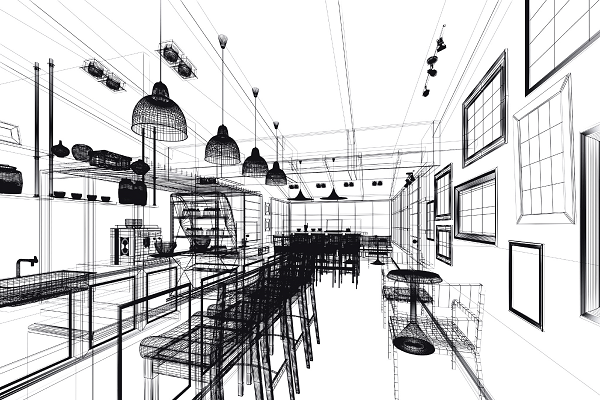
How to navigate the process of permitting when adding foodservice to multi-site facilities.
From redesigning the floor plan and layout of the store to coordinating electrical, plumbing and construction, facility managers (FMs) adding foodservice to their multi-site facilities have a seemingly endless number of tasks — many of which require permits. And while these permits may seem like an annoying formality on a long list of to-dos, they’re actually a vital part of a safe and successful expansion into foodservice. Ignoring them could mean safety hazards, exorbitant fines, delayed construction dates or, worse, complete project shutdown.
So what steps should FMs take during the planning stages of a project to ensure they have the right permits in place and avoid these issues? Permitting expert Vaun Podlogar, President, State Permits Inc., a company that manages building permits across the United States and Canada, gave us his advice.
Assessing Your Permit Needs
Before the project even breaks ground, FMs should ask for advice from peers who have similar experience locally or consult a permit management firm. Consulting your building’s architect and any engineers involved with the property is necessary as well.
For FMs who are adding foodservice to their facility, Podlogar relayed a checklist of specific permit categories to plan for:
Keep in mind, each type of permit requires proper research. The municipality and county a business is located in may have vastly different requirements, creating some confusion about overlapping obligations. Podlogar said that necessary due diligence can make the application process easier. “Take, for example, four different businesses at each corner of a four-way cross street,” he said. “Each one of those four corners may have different zoning requirements, even if they’re part of the same jurisdiction, so each business may require unique permits.”
It’s also important to recognize that local/state laws change all the time, so the permits needed for a past project may not be the same for the next one.
Applying for Permits: Who To Use?
When the time comes to apply for permits, FMs must determine who is up for the task. Podlogar presented the options, with issues to consider for each:
Podlogar explained how his company handles all of the red tape involved in municipal requirements through Planning and Zoning, the Health Department and the Building Department.
Avoiding Dire Consequences
The process of securing the right permits does more than just ensure you’re up to code — it also helps you avoid serious repercussions due to violations, including hefty fines or delays.
“The biggest consequence would be that they shut your store down until you agree to comply,” Podlogar said. “Local officials can also fine your business. If you don’t correct the violation, these fines can double, triple or even quadruple over time.”
Because statutes are always evolving, and projects always have unexpected obstacles, violations can happen any time, during even the most well-organized projects — that’s where it pays to have the help of a professional.
“Existing violations may creep up as you’re planning the project,” Podlogar said. “So, this is where the help of a permit managing company, or other field experts, would be extremely beneficial. We ask an extensive list of questions to dig deep and uncover important information about the project to avoid violations and resolve the ones that do come up.”
The project itself may be tiring and stressful, but FMs must remember to stay on top of permitting issues for their new foodservice addition. Seek out experts or peers in your area who have experience managing the process. Not being up-to-code means valuable time lost and financial losses for your company, even before the eatery is up and running.
Stepping Stones
Vaun Podlogar, President, State Permits, Inc., identified the immediate permitting steps an FM should take when adding a kitchen or restaurant
to an existing store:
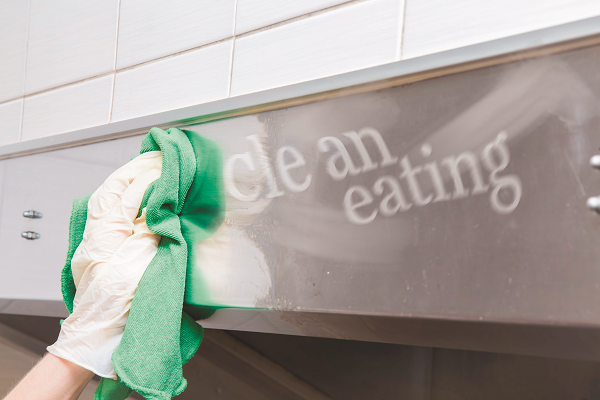
Retailers adding foodservice to their stores face unique cleaning challenges.
In retail, a dirty store can lead to a sullied brand. In foodservice, however, the consequences can be much more dire, according to the Johns Hopkins Bloomberg School of Public Health. In 2018, it conducted a study to determine the total costs of foodborne illness outbreaks in restaurants from 2010 to 2015. It found that when accounting for lost revenue, lawsuits, legal fees and fines, a single outbreak of foodborne illness affecting 250 people can cost upwards of $2.5 million.
As more and more retailers add foodservice operations to their stores — everything from cafes and cafeterias to quick- and full-service restaurants — it’s clear: facility managers in hybrid settings must make cleaning a top priority.
“Cleanliness is obviously important for brand image and appearance. But when it comes to foodservice, there also are federal and state guidelines that create expectations most retailers probably aren’t used to,” said Amanda Smith, National Sales Executive at Superclean Service Company, a commercial cleaning business. “For that reason, having a top-notch cleaning program is paramount.”
According to Smith, successful cleaning in foodservice settings hinges on having the correct supplies and the right strategies. The following tips can help retail facility managers (FMs) acquire both — avoiding a mess in more ways than one.
1. Raise your equipment IQ.
Although there are many differences between retail and restaurant spaces, the most obvious one from a maintenance perspective is the equipment. Along with making sure floors, surfaces and bathrooms are clean, retail FMs in foodservice settings must also consider specialized items like cooking ranges, ice makers, espresso machines and grease traps, all of which have unique cleaning requirements.
“Exhaust hoods, for instance, are really important for fire safety [in commercial kitchens]. Hoods generally require preventive maintenance or break-fix support, and that typically falls underneath the facility manager’s realm of responsibilities,” Smith explained. She added that FMs might need to source new vendors or conduct new training to ensure proper cleaning and maintenance of specialized foodservice equipment.
2. Increase your cleanser comprehension.
In foodservice settings, it’s especially important to understand when you should sanitize versus when you should disinfect.
“Sanitizers are agents that sit on the surface for 30 seconds and kill 99.9 percent of bacteria, whereas disinfectants destroy 100 percent of organisms but generally need around 10 minutes of dwell time,” Smith said. “When you need to kill as many germs as possible in a short amount of time, that’s when you use sanitizers — so things like countertops or floors that you come in constant contact with and need to clean regularly throughout the day. On the other hand, you must disinfect restrooms, because there’s a risk of cross-contamination that can lead to dirty eating utensils, condiments — all kinds of things.”
3. Avoid cross-contamination.
Preventing cross-contamination should be a major priority for retail FMs with foodservice responsibilities, according to Smith. She explained that an easy yet effective way to prevent germ migration is to have different sets of cleaning equipment for different foodservice “zones.”
“You need one set of cleaning equipment for the front of the house and one for the back of the house. You don’t want to drag kitchen grease from the kitchen to the dining room by using the same mop head,” Smith said. “The same thing applies to restrooms; you don’t want to be cleaning the restrooms and then use the same equipment and utensils to clean the kitchen.”
Color-coding can help. “You can have different colored mop heads for the front and back of the house, and different colored mop buckets or wringers. I’ve even seen people place duct tape on one set of equipment to indicate it’s for a separate area.”
4. Mind your moisture.
Because of spills, foodservice tends to see a lot of wet mopping, which, Smith explained, can lead to lots of “soil and slosh” on baseboards and walls. For that reason, she said, it’s important to routinely clean baseboards and walls up to 8 inches off the floor.
But cleaning and maintenance staff must be careful not to waterlog foodservice areas. “Many times, people cleaning kitchen floors will deck-brush them, then rinse them with a hose,” Smith explained. “If you have fire-resistant panel walls, that’s acceptable. But if you have drywall, you must be sure you’re not over-wetting. That can lead to mold.”
It also can lead to slips and falls, which are “definitely an added risk” in foodservice settings, Smith pointed out.
5. Optimize cleaning routines.
To make cleaning simultaneously more effective, efficient and affordable, avoid one-size-fits-all cleaning routines in favor of custom programs. Among the things you should consider are:
6. Hire a qualified cleaning partner.
According to Smith, cleaning contractors can help retail FMs navigate the differences between retail and foodservice, whether they’re contracted for routine cleaning every day, deep cleaning on an episodic or periodic basis, or merely consulting at the inception of a new cleaning program. Smith advised that it’s important to hire someone with prior experience in foodservice spaces comparable to yours in size and segment (e.g., quick-service, fast-casual, full-service, fine-dining).
“First-hand experience in your specific setting is key, because foodservice settings can be vastly different.” Smith said. Her final piece of advice? Pivot from a responsive to preventive mindset. “In retail, cleaning tends to be reactive — if something’s dirty, you clean it. But in foodservice, you have to be proactive.”
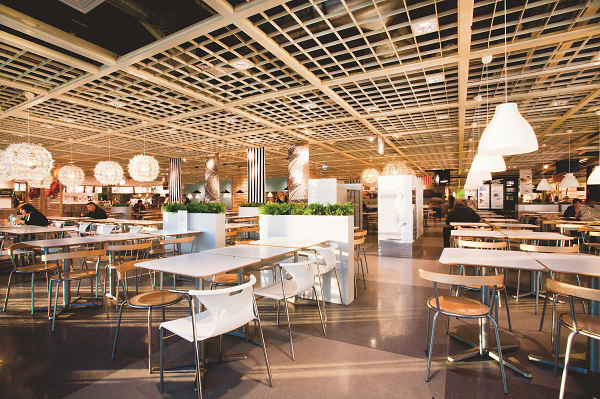
Retail and foodservice are colliding in the most delicious way.
When mail-order catalogs reached peak popularity in the 1960s, pundits predicted the end of brick-and-mortar retail. When televised home shopping arrived in the 1980s, observers again put physical retail on the endangered species list. And when e-commerce reared its head for the first time in the 1990s, traditional retail stores received yet another death sentence. But brick-and-mortar retail isn’t expired, obsolete or extinct. In fact, 86 percent of U.S. retail sales still happen in physical stores, according to market research company Forrester.
These days, one of the most delectable reasons traditional retail continues to survive is its marriage to foodservice, which is one of the top five trends driving the retail facilities management industry today, according to Connex’s “2019 Trends Report.” Based on industry research and feedback from retail facility managers, the report calls retail-foodservice partnerships “one of the most powerful trends in retail.”
Retail facility managers must therefore take note: In the emerging retail landscape, success hinges as much on consumers’ stomachs as it does on their wallets.
Why Retailers Are Hungry for Foodservice
Comprising everything from quick-service eateries, cafés and gourmet food halls to onsite breweries, wine bars and even full-service restaurants, in-store foodservice is helping retailers of all stripes feed their bottom line by way of feeding their customers.
But foodservice is more than a potential new profit center. In fact, the median cost to open a new restaurant is $375,000, according to industry website RestaurantOwner.com. What’s more, restaurateurs say it can take three to five years for a new restaurant to turn a profit. So, even with the support of a successful retail partner, revenue alone typically makes for a poor business case. Instead, retailers are ringing the dinner bell primarily because it helps them attract and retain the customers that will grow their core business, suggested Nick Egelanian, President of SiteWorks Retail Real Estate Services, a real estate consultancy specializing in retail clientele.
According to Egelanian, integrated foodservice typically offers retailers one of three benefits. The first is customer loyalty. Take Costco, for example. “Costco’s food court is very basic but very busy,” Egelanian explained. “Costco sells a hot dog and a soda for $1.50. That’s not a money-maker for them, but they have an almost religious policy about not raising the price, because that basic hot-dog-and-soda combination has an almost cult-like following.”
Another benefit is increased dwell time, suggests a 2018 report by commercial real estate company Jones Lang LaSalle. When customers eat at malls, the study found, they spend an average of 35 additional minutes browsing stores compared to customers who don’t eat.
That’s why Swedish home retailer IKEA sells its famous Swedish meatballs at its onsite restaurants, according to Egelanian. “IKEA is trying to make a family event out of going to IKEA,” he said. “People who go to IKEA commit a pretty serious amount of time to shopping there, and IKEA has found a great way to engage them in a longer stay so they can complete what can sometimes be pretty big and complicated purchases. Although they make money on their food, they’re not doing it to run a restaurant; they’re primarily doing it as a service to their customers so they can sell more merchandise to them.”
Yet another benefit is differentiation. In its report, Jones Lang LaSalle found that 40 percent of consumers choose the malls and shopping centers they visit based on the restaurants that are located there.
What’s true of malls is also evident at other retail formats, according to Egelanian. “If you look at the Walmarts of the world, they’re putting Subway and McDonald’s outlets in their stores in part to offer a better experience, but also out of a desire to add a little bit of pizazz — a little bit of something extra to help set them apart,” he said.
Exemplary Edible Experiences
Indeed, what increasingly sets some stores apart is not necessarily the products inside them but rather the experiences, which are a growing priority for consumers, according to research firm McKinsey & Company. In 2017, the firm analyzed personal-consumption expenditures (PCE) over the preceding three years and found that consumer spending on experiences — including eating at restaurants — had grown more than 1.5 times faster than overall spending and nearly four times faster than spending on goods.
“There’s no evidence that this is true in commodity retail, which is 80 percent of U.S. retail, but in malls and specialty retail, food is being offered as part of the need to offer more experiences,” reported Egelanian. He said the percentage of anchor space that malls are dedicating to food and entertainment has more than doubled in the past decade, from 7 percent to 17 percent. “And I would submit that it could get up to 25 or 30 percent in the coming years. People need a reason to commit their time and energy to leaving their house to shop in [malls and specialty retail stores], and food gives them that.”
A standout example is Westfield Century City, a 1.3 million-square -foot outdoor mall in Los Angeles. Originally opened in 1964, it underwent a $1 billion renovation and expansion in 2017, adding more than 200 new tenants. According to the Los Angeles Times, only half of the three-story mall is dedicated to fashion; the other half is dominated by experiential offerings, including Eataly, which encompasses 67,000 square feet of commingled restaurant and retail space.
“Restaurants … benefit the retail market by being a constant marketing window for products,” Raffaele Piarulli, Vice President of Operations at Eataly USA, told Nation’s Restaurant News in 2017 after the Los Angeles store’s opening. “Where else can you dine at a table, enjoy a monocultivar extra virgin olive oil from Italy and have your server point you to the shelf where you can purchase it to take home with you?”
In hybrid environments like Eataly, foodservice and retail “feed” off each other, literally and figuratively. “Walking around a produce market will always trigger a craving for your favorite salad; looking at a beautiful steak cut will make you think about the last time you had a nice New York Strip, eventually,” Piarulli continued.
Another retailer that excels at creating experiential foodservice is luxury home furnishings purveyor Restoration Hardware (RH), which opened its first food-and-beverage destination in 2015 inside its Chicago flagship. A partnership with celebrated Chicago restaurateur Brendan Sodikoff — who helms the company’s foodservice operation, RH Hospitality — the concept encompasses three Instagram-able eateries alongside boutique design galleries inside a historic building. The eateries include: 3 Arts Club Pantry & Espresso bar, a small coffee shop with grab-and-go doughnuts, pastries and juices; 3 Arts Club Wine Vault, a wine bar with cheese boards and small plates; and 3 Arts Club Café, a full-service restaurant serving chef-driven cuisine.
“With the ongoing development of RH Hospitality, we are demonstrating that we can execute a profitable, high-quality food and beverage experience across multiple markets while driving traffic into our galleries that result in incremental revenues in our core business,” Chairman and CEO Gary Friedman said in March 2019 during a Restoration Hardware’s earnings call. “We believe RH Hospitality is now a proven scalable business, and our plan is to increase the number of new galleries with integrated restaurants, wine vaults and barista bars going forward.”
Today, Restoration Hardware has six galleries with destination restaurants, including its newest, RH Yountville in Napa Valley, which includes a coffee bar, an indoor/outdoor restaurant surrounded by heritage olive trees and a two-story wine bar with two outdoor “living rooms” that can be reserved for private tastings.
The Future of Retail
As novel as their partnership seems, retail and foodservice have been fast friends for more than a century. One of the earliest department stores — Harrods of London, which opened in 1849 — opened its world-famous Food Halls back in 1902. The store recently revived them with Eataly-esque offerings that peddle everything from fresh meat, fish, dairy and produce to baked goods, tea, coffee, chocolate and wine.
As far as trends go, it’s a scrumptious revival. And young people deserve a lot of the credit, according to the National Retail Federation. In 2017, the group surveyed more than 3,000 Millennial and Gen Z consumers and found that nearly half (49 percent) said they visit brick-and-mortar retail stores more often than they used to because of new entertainment or food options inside them. Millennial parents, it subsequently found, are more than twice as likely as other parents to seek out experiences like dining out.
“Millennials are consuming differently than their parents,” Egelanian echoed.
While restaurants and retail continue their courtship, FMs will face new challenges in areas as diverse as cleaning, energy and human resources — which will require not only the right strategies, but also the right attitude.
As RH Hospitality’s Sodikoff said in the winter 2019 issue of Business of Home, “Old retailing is dead … Whether you have food or not, having a greater hospitality lens on how to make people feel great is what defines the future of retail.”
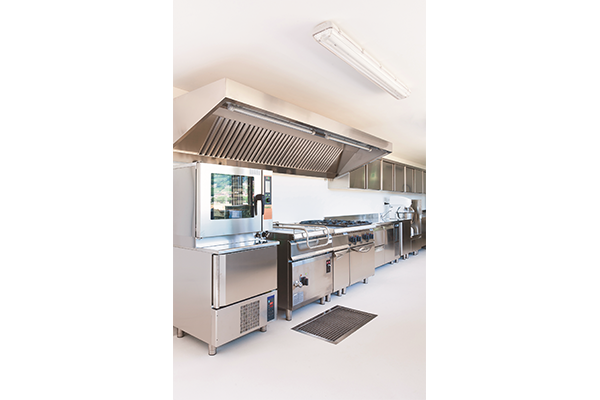
What FMs should know before outfitting a foodservice space.
When upgrading appliances or constructing a new foodservice space, FMs have many options. However, due diligence is critical to securing the best fit for multi-site properties. Josh Zolin, CEO, Windy City Equipment, offers his tips for a top-notch experience.
1) Power Source. The first determination a FM must make is whether a kitchen will be powered by gas or electricity. “Some fully operational commercial kitchens can be 100 percent electric, such as restaurants in airports, and there are many reasons why some choose electric over gas,” Zolin explained. “Sometimes gas isn’t available, or people think electric is safer than gas-powered equipment.”
Gas stoves and ovens tend to cook food quicker, but the initial cost and installation may be much higher than electric appliances. Electric stoves and ovens may be easier to operate and provide a more even workspace for staff. However, if the power goes off, your appliances are off-line.
There are pros and cons to each, but Zolin has a personal preference. “Personally, I prefer gas. In my opinion, it’s safer and easier to maintain. There are significantly less variables with gas lines, as opposed to electricity that is traveling throughout the building and interconnected with other systems.” FMs need to weigh the costs of each before they make a decision.
2) Air Supply. FMs need to know if extra ventilation is required in the kitchen or foodservice space. Most electric kitchen equipment will not require an exhaust hood be installed, Zolin said, while all gas appliances require extensive ventilation.
“This also depends upon what type of foodservice is planned,” Zolin said. “Some applications within kitchens don’t need to be vented, but you should check with local inspectors first, because regulations vary from market-to-market.” In some cities, smaller appliances like microwaves don’t require an exhaust hood to be installed. However, other jurisdictions may have more strict rules and regulations.
3) Design Awareness. FMs need to understand the design and layout of the kitchen or food preparation space they’re working with. Easy access to appliances is necessary to control maintenance costs. “A well-designed kitchen will be significantly more efficient, as opposed to one that’s poorly designed and does not provide for easy maintenance access,” Zolin explained. He provided an example of how a poorly designed kitchen could result in skyrocketing FM repair costs.
“If the new kitchen will include a convection oven, that oven has a motor in the back, and eventually it will need repairs. If the kitchen is properly designed, maintenance professionals can easily access the back of the oven and make repairs,” he said. “However, if the kitchen is poorly designed, maintenance professionals may have to take the entire kitchen off-line and move other kitchen equipment to access the convection oven motor. Repair costs can soar thousands of dollars due to the extra time required to simply access the motor.”
4) Plan with Existing Suppliers. The keys to success are planning and communication. Extensive preparation and planning before the project begins will relieve stress and make the implementation of new foodservices much easier.
Planning extends to existing supplier relationships as well. Communication with suppliers who already provide services to the property is integral to ensure equipment is installed properly and efficiently.
“FMs should have established relationships with existing suppliers, and they should communicate everything planned for the store with existing plumbers, electricians as well as HVAC and refrigeration suppliers,” Zolin said. “These suppliers will be involved and will help complete the project.”
The more aware each supplier is of the others’ plans, the better they can work together to achieve success. With the large number of moving parts involved, improving communications will go a long way toward ensuring the project is completed in a timely and cost-effective manner.

From pests to fires, experts dish out advice for facility managers adding foodservice experiences to multi-site facilities.
When multi-site retailers add foodservice to their stores, there are several moving pieces to consider and many priorities at play. But the health and safety of customers and staff should always be the top priority.
Two essential elements of foodservice safety are pest control and fire prevention. Connexus spoke with experts in both fields for guidance in handling these important safety issues. Here’s
their advice.
Infesting and Nesting
Adding a kitchen to a property often attracts unwelcome tenants due to the new product being offered — food. These pests bring the danger of disease, along with negative PR for your business. How can you, as an FM, best prevent these pests from coming in? And if they do take residence, what’s the best way to remove them?
Pest control expert Dominique Sauvage, Senior Director of Field Operations, Quality and Training, Copesan, explained that a retail space that begins offering foodservice could see an increase in potential infestations.
“Pests don’t just appear in a building,” he said. “They’re attracted there by something — food, warmth, a place to hide, somewhere to breed. Adding this new dynamic to your store opens the door to new pests.”
Sometimes the signs that you have an infestation aren’t obvious. FMs need to look for clues. Cockroaches, for example, live and breed in dark, moist areas you may not be able to access. However, you can check along the floors and inside cabinets for evidence of droppings or eggs. For rodents, look for nesting materials, like paper, grass, hair or cloth. Also, regularly check appliances and walls for signs of gnawing or holes.
Sauvage explained how the pest control industry operates. “Integrated pest management is the industry best practice,” he said. “Ask yourself, ‘What can I do to correct the problem before the use of pesticides is needed?’”
Here’s how FMs can begin to address a pest problem:
If none of these solutions solve the problem, then pesticides may be necessary. Some questions FMs should consider before using pesticides are:
“Pesticides will kill what is there today,” Sauvage said. “But identifying and correcting the root cause is a much better strategy.”
Up in Flames
Adding kitchen equipment creates another safety consideration for FMs: the prevention and extinguishing of fires. According to Bruce Falke, Director of Sales, Commercial Fire, one of the key steps in overseeing the installation of new kitchen equipment is the oven hood and exhaust system ductwork. “This is an extremely difficult process, because usually the ductwork can’t be built straight up,” Falke explained. “The building is already constructed, and measures have to be taken to fit the new exhaust ducts with existing electrical and plumbing fixtures.”
The new horizontal pathway also traps more fire-causing grease. Grease-laden vapors are produced during the cooking process. Normally, if provided a straight vertical path to exit, these vapors are filtered through the ductwork and forced out into the air via an up-blast fan. However, while traveling down a horizontal pathway, the grease-laden vapors hit the stainless steel and cause build up around tough-to-clean corners. “The result is a major fire hazard,” Falke said. “One spark and the whole thing can catch fire.”
Here’s how FMs can help prevent fire hazards when kitchen equipment is installed:
Preventing fires is just one head of the hydra. The next question is, how should FMs extinguish a fire if one breaks out?
The kitchen fire suppression system (often called the ANSUL system) is probably the most important piece of fire-safety equipment in any facility with cooking equipment. A properly installed and serviced kitchen fire suppression system can stop a fire before it gets into the ductwork and before it spreads to cause major damage.
Falke referred to the National Fire Protection Association’s (NFPA) standards for portable fire extinguishers, NFPA-10. “Each code recommends proper protocol surrounding the installation, inspection, testing, maintenance and repair [of fire extinguishers],” Falke explained.
Extinguishers used in kitchen environments have evolved. In recent years, fire safety experts have developed a new extinguisher (Class K) that is necessary for foodservice providers. The major difference is this extinguisher’s uncanny ability to efficiently put out fires that involve grease or oil, making the chemical compound inside perfect for fighting fires that originate in a kitchen.
The health and safety of customers and staff should be a top priority of all FMs when adding foodservice to a property. With the right safety education, you can avoid risks in your newly expanded store.
Pesky Pests
Dominique Sauvage, Senior Director of Field Operations, Quality and Training, Copesan, identifies the infestations to look for in foodservice facilities:
Rodents:
Roof rats (black rats)
Norway rats (brown rats)
House mice
Insects:
Cockroaches (German, American, Oriental, Brown-banded)
Flies
Insects that can infest specific raw products like grains (granary, rice and maize weevils)
Bees/wasps
Once a Month
The recurring time frame to consult pest control professionals to keep infestations under control.